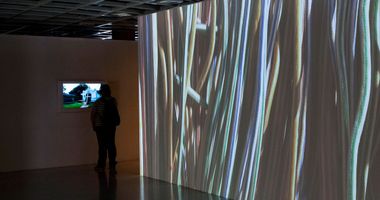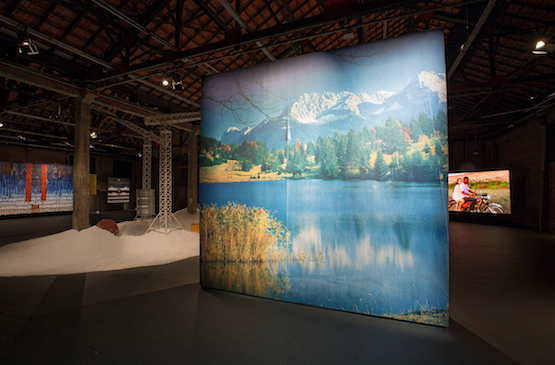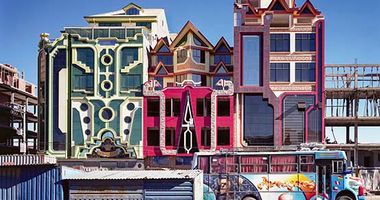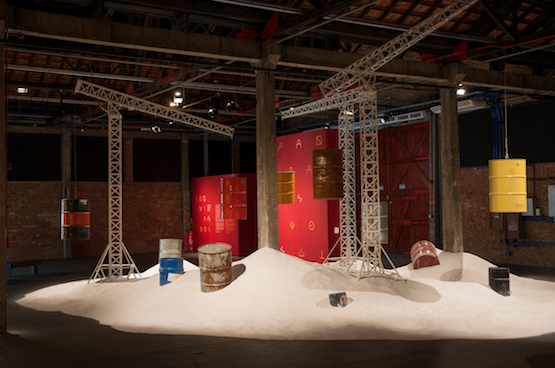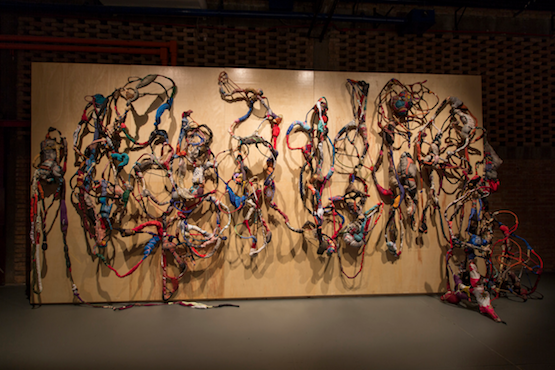Solange Farkas
Solange Farkas. © Camila Butcher. Courtesy Videobrasil.
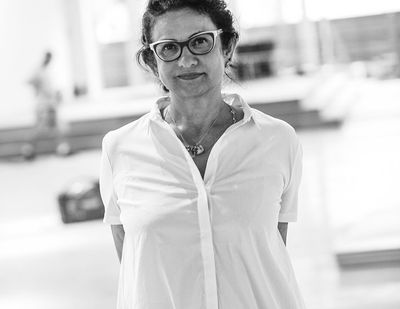
Solange Farkas. © Camila Butcher. Courtesy Videobrasil.
Solange Farkas staged the first edition of Festival Videobrasil in 1983 at the tail end of Brazil's military dictatorship. It was conceived as a platform for contemporary video art and a refuge for a generation of Brazilian artists who began exploring the medium's ability to communicate.
In 1991, the Associação Cultural Videobrasil was established, and in 1992 the festival partnered with Sesc São Paulo. To this day, a large part of Videobrasil's programme unfolds in Lina Bo Bardi's magnificent Sesc Pompeia. The perspective the festival offers has always been a southern one: it spreads its net across the global South, 'an area comprising Latin America, the Caribbean, Africa, the Middle East, Oceania and some countries in Europe and Asia.'
The 19th edition of Videobrasil marked a number of turning points, no less the fact that it made Southern Panoramas 'the core of its entire programming.' A total of 62 artists and groups from 27 countries were featured in three exhibitions: one show featured guest artists Sônia Gomes, Rodrigo Matheus, Gabriel Abrantes, Abdoulaye Konaté and Yto Barrada, while the other two were curated through open calls by Bernardo José de Souza, Bitu Cassundé, João Laia and Júlia Rebouças.
The first of these exhibitions featured such names as Roy Dib, Andres Bedoya and Dor Guez. In the second exhibition of commissioned projects works by Ting-Ting Cheng, Keli-Safia Maksud, Carlos Monroy and Cristiano Lenhardt were included; this exhibition inaugurated Galpão VB, Videobrasil's new permanent home. Marking this turning point, Solange Farkas reflects on the way Videobrasil has evolved into a platform for contemporary art.
When I did the first edition everyone was surprised, because despite there being a little nonsense the work was really strong.
SBFor Videobrasil, 2015 was a big year. A number of new initiatives were launched, like the new permanent space, Galpão VB. From this point, I wonder if we might look back to how Videobrasil began, and how it has evolved since?
SFYou might say Videobrasil and video in Brazil grew up together. Videobrasil was born 30 years ago as a video festival, and video art was born here as a medium of communication around that same time. Practices used the direction of television and cinema, not specifically as a visual art form, but as a method of reaction and communication. Video was used more as a hybrid medium that related to all different kinds of expression, like performance, visual arts and cinema.
It is important to understand the local context especially in a political sense when thinking about video art in this time, because in that period we were in the time of the dictatorship. It was hard and we did not have open platforms for communication where we could talk. So video in that period was kind of a political manifestation.
SBCan you remember that moment when you started Videobrasil?
SFMy father-in-law was a crazy guy, a really well known artist in Brazil who worked in photography and cinema. He told me some artists who worked in video might be interested to do something, and so we should pay attention to their needs, so the festival started. When I did the first edition everyone was surprised, because despite there being a little nonsense the work was really strong.
At the time censorship was strong, and we had to show all the works to the censor before we could show them in the festival. During the [first] five years it was crazy, but it was incredible too because we were exploring video's potential. Of course, [I] didn't know about video outside of Brazil in that period. We tried to find out more: we heard about different movements and people outside of Brazil.
SBThis brings us to the global South and the focus Videobrasil has had on this region.
SFIn the beginning our mission was more to legitimise video in Brazil, but 15 years later we started to try and understand the importance of opening the festival to the international community. Doing this opened up a new world for me. It is unbelievable to see how people think in Argentina, Nigeria and Senegal for instance, which is unbelievable because here, for Brazilian people like myself, it was very difficult to go to these countries.
Who were these artists? And it became a kind of, not curiosity, but a great big surprise. It was brilliant. It was like a new reality: we started to see how artists relate to the same things but from a really different local perspective, yet in a global sense. The view was fresh, different, vibrant, and at the same time sad; in general we were meeting artists from regions that are very hard to live in because they [are] conflict zones. This gave us the energy to shift our direction to the global South. It is a very dynamic vision, and this perspective is changing all the time.
SBThat makes me think about Carlos Monroy's project Llorando se foi. O Museu da Lambada. In memoriam de Francisco "Chico" Oliveira, which was presented as part of the commissioned projects shown at Galpão VB as part of Videobrasil's 19th edition.__In his text he was saying, you know Brazil is the numb giant. That's an interesting project because it positions Brazil in a somewhat colonial position.
SFYes, this is true. It's important to critique ourselves. It is a good representation of the relations between South and North, not only within Brazil but also within the region. But of course, we are not only talking about geography; this is a kind of mirror through which we can see how the world is changing, and can change.
SBWould you say the core of Videobrasil hasn't changed, even if it has become a contemporary art festival that engages with all forms of art making, from performance to publishing?
SFVideobrasil today is a contemporary art festival of course, but video is still my favourite medium. It's powerful, immediate, strong, dynamic. But the festival also raises other questions too, like how video relates to and contaminates other mediums.
SBWhat is your long-term vision for Videobrasil?
SFEveryone asks me about how I will continue this project, but I don't know. I don't know how I managed to do this in the beginning! In Brazil, we have these policies for culture that are very strong and it's a really new country, in a good sense and in a bad sense. Maybe it's because I believe in the necessity to have video.
I really feel that a lot of artists both inside and outside of the country need this kind of platform to exist, and this gives me the energy to go on. I mean of course I have some sort of strategy; we have a lot of really strong networks all over the world, since I've been doing this for a long, long time. I've learned some things, but I still want to learn a little bit more. It's all about risk, that's the point. —[O]



